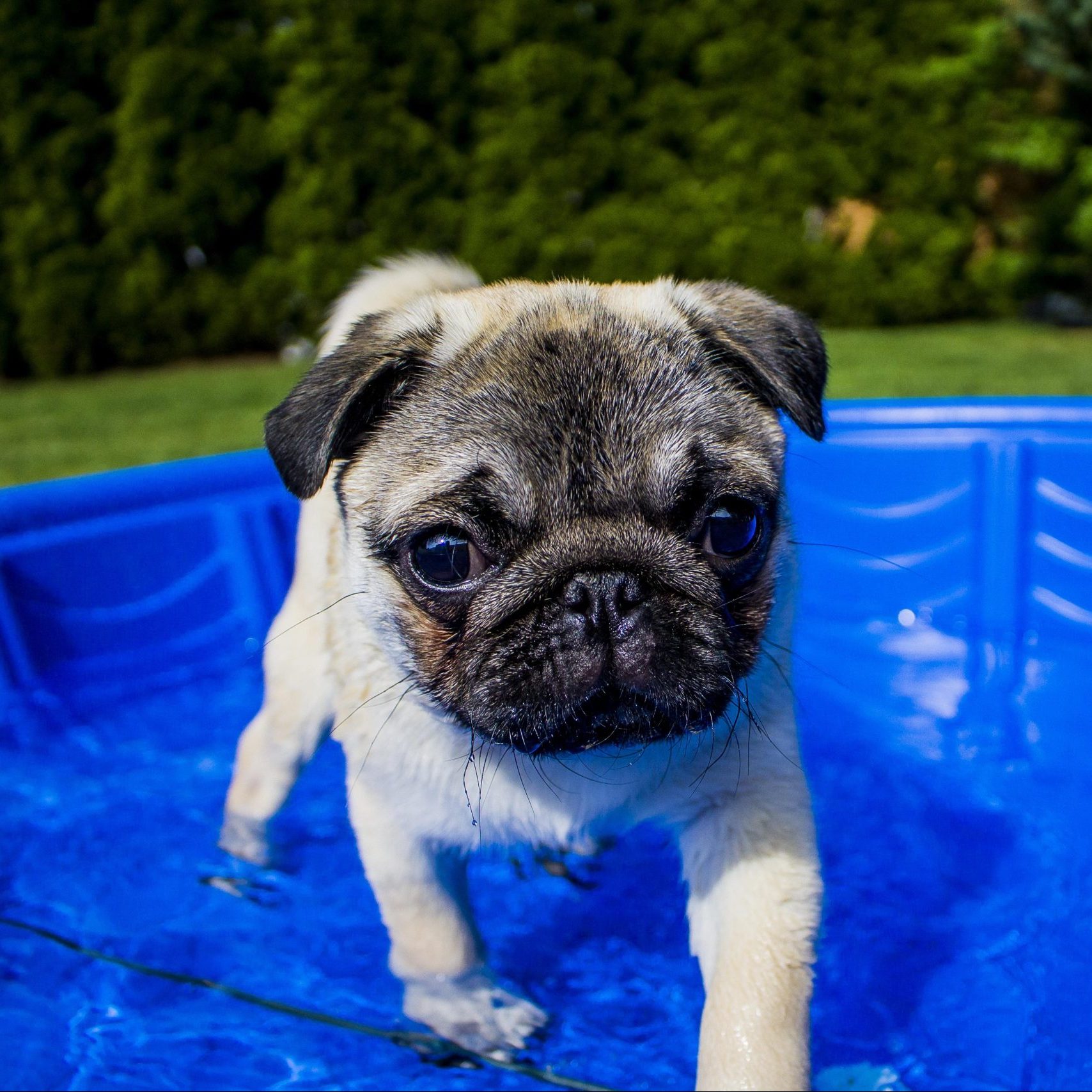
Monday, June 8, 2015
Is your dog a capable swimmer, or dreadfully afraid of water? As the weather heats up and pools are opening for the summer season, pet owner should be mindful of pool safety for pets regardless if your dog loves to swim or avoids the pool like the veterinary office.
The first thing to realize is that many recommendations for dog pool safety parallel those recommended for safety of small children. Supervision, swim instruction and backup safety monitors are advised for both children and pets.
Swim School
The first step should be teaching your dog how to swim. Don’t just throw your pup in the pool and expect him to figure it out. Dogs are not born automatically knowing how to swim, rather they learn the skill after exposure and practice. Some heavy bodied dogs like Pugs or English Bulldogs have difficulty floating and swimming easily. And even breeds like the water-friendly Labrador retriever can develop fear of water if not properly exposed to swimming as a puppy.
Expose your dog to swimming in a controlled, non-excitable manner. The gradual slope of a lake is ideal for first swim lessons and allows the dog to adjust to gradual changes in water depth. Be calm, remain positive and praise your dog with first placing him in ankle deep water. Provide toys to play with, chase or retrieve.
Only when your dog is comfortable with shallow water, should you introduce him to greater depths. Don’t expect your dog to go into the water alone- teach by example. Get out there with him and show him how much fun you can have splashing about. Reward calm, brave behavior and resist the temptation to coddle the nervous new swimmer.
The Exit
Getting out of a lake is easy. But those with pools now you have to teach your dog how to exit an artificial body of water. Swim alongside your dog and show him how to exit the pool via the steps. In pools that have steep steps or ladders, install a dog ladder or floating doggy dock to give your pooch easier exit.
Restricted access
Don’t leave your pets unattended around the pool. Supervise your dog’s swim time just as you would with toddlers. Install a barrier fence around the pool that limits your dog’s access to the pool when not directly supervised.
Safety alert devices
Set your pool up with a safety device that alerts you to inadvertent pool entry. Some devices are available through pool supply companies and alert via a receiver inside the home when the water surface has been disturbed. Other devices that fit on the pet include the Safety Turtle- a device that attaches to your dog’s collar and alerts you when the device is submerged in water.
Other pool safety devices
Floatation devices are advised for any dog around large bodies of water or for the less-confident swimmers. The backyard pool is of known depth and visibility, but lakes and oceans prove more dangerous. Although I know my dogs can swim in the backyard pool, when out on Lake Mead they wear their life vests reliably.
Know your dog
Be aware of your dog’s special needs. Elderly dogs, puppies or those with hearing or visual impairment may be at added risk for pool accidents or drowning. And if you are entertaining guests, be sure to look out for your pet’s safety. If unable to monitor your pet directly, keep him safe inside the home.
